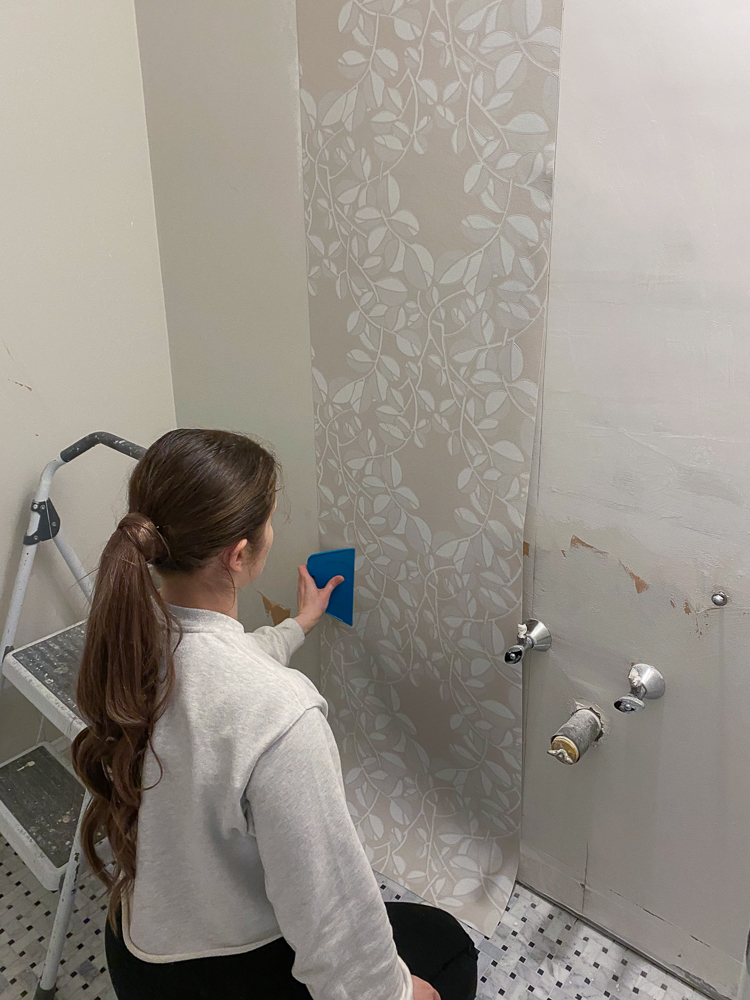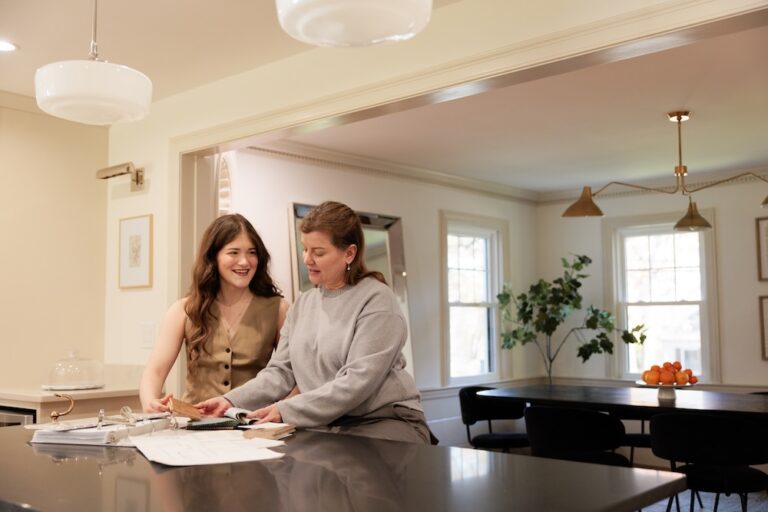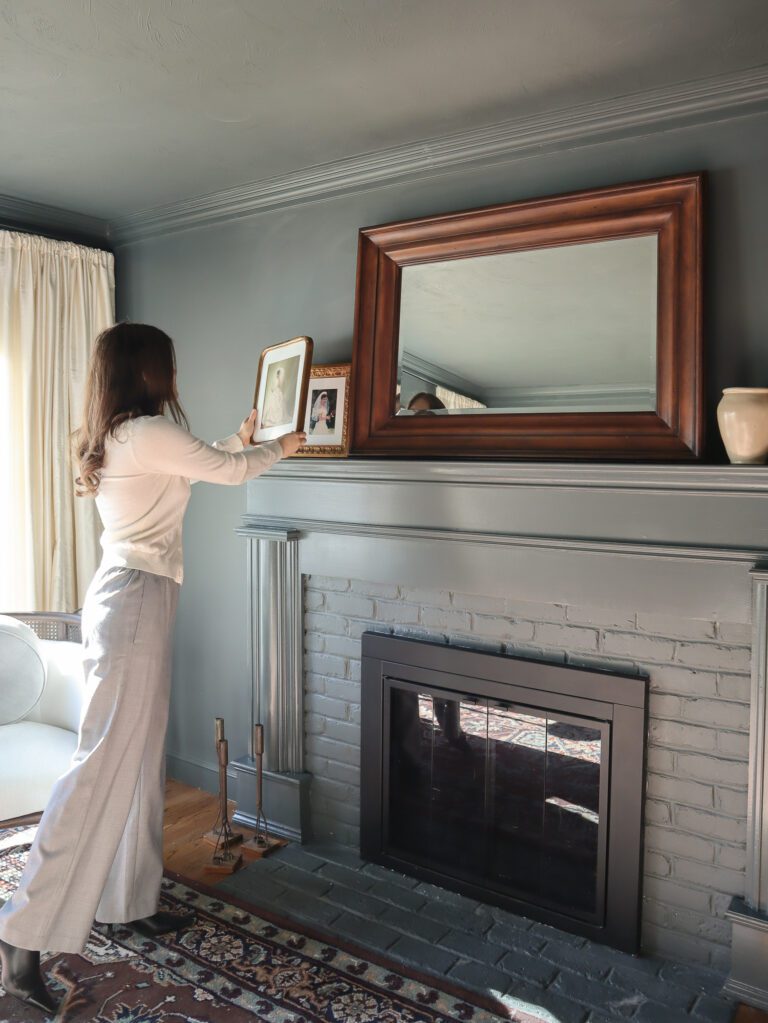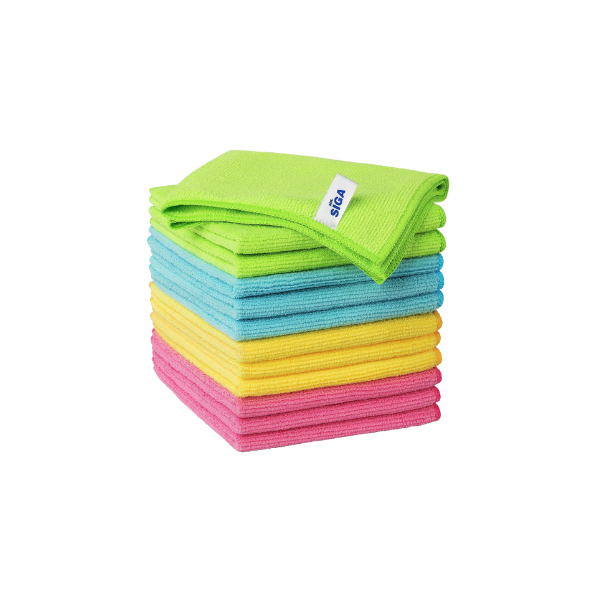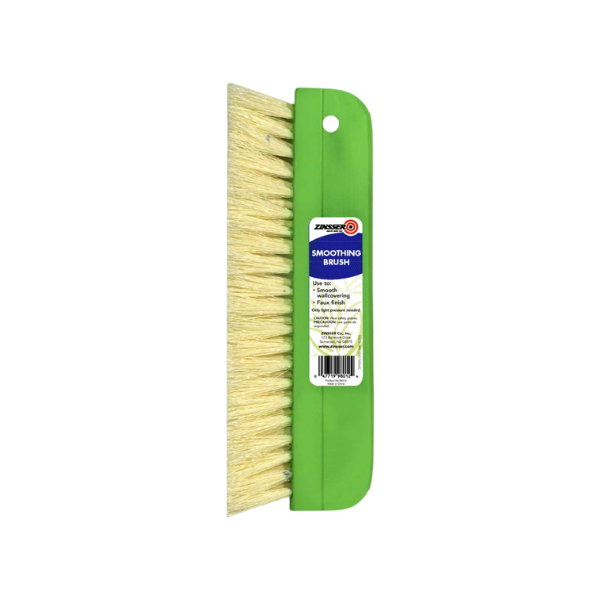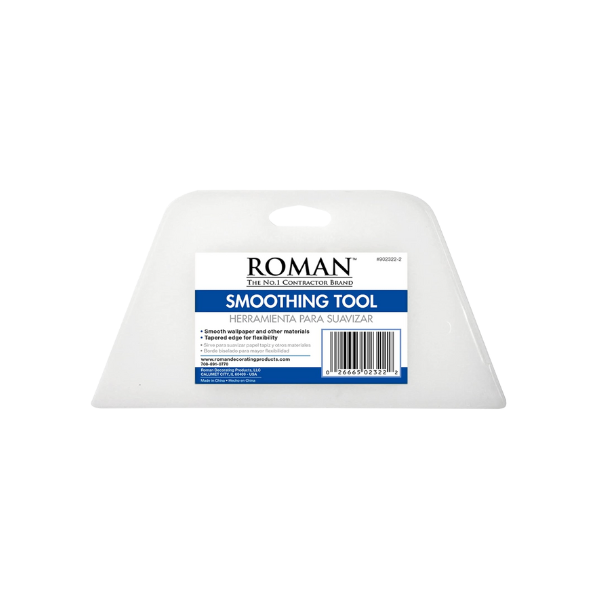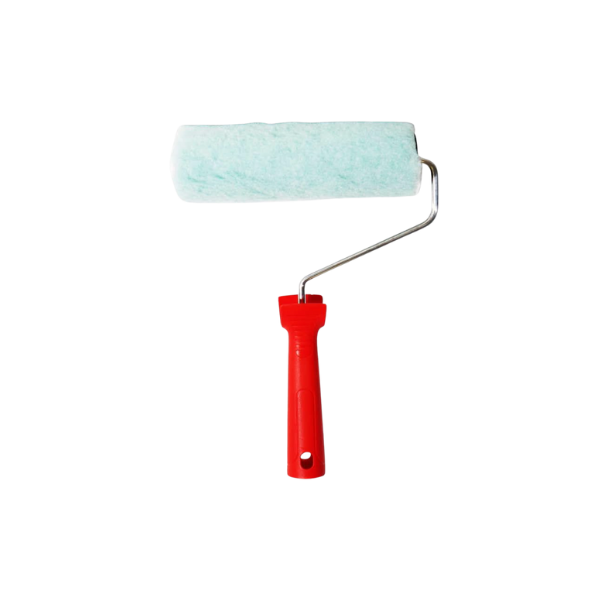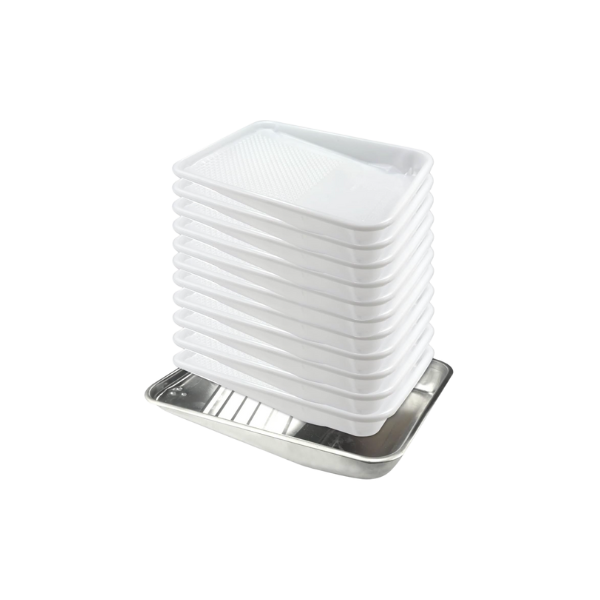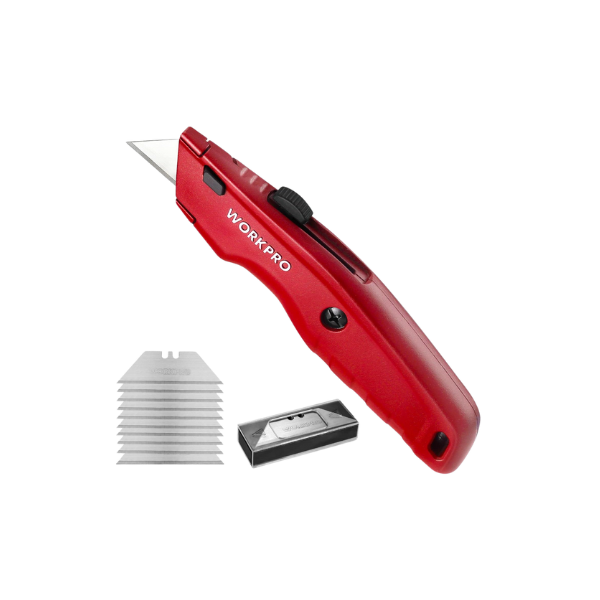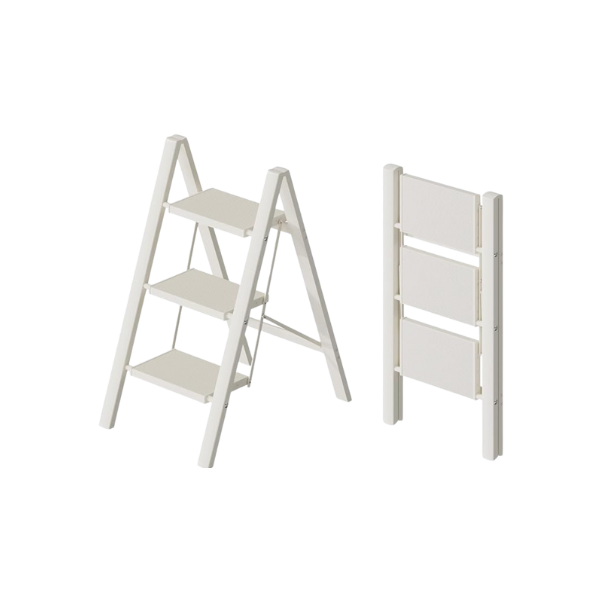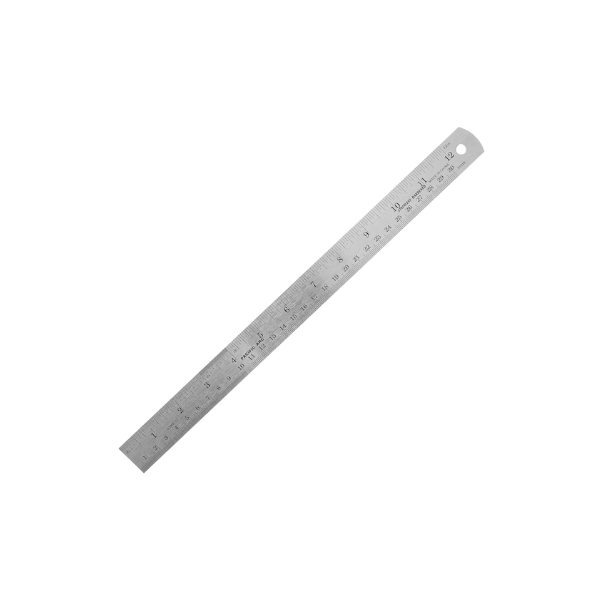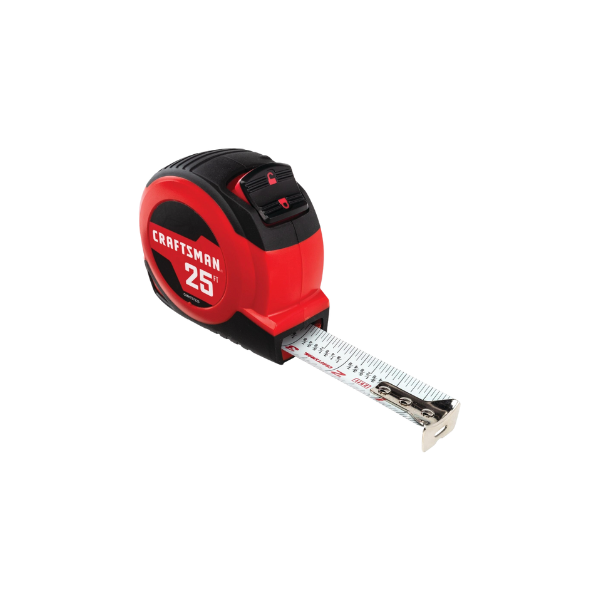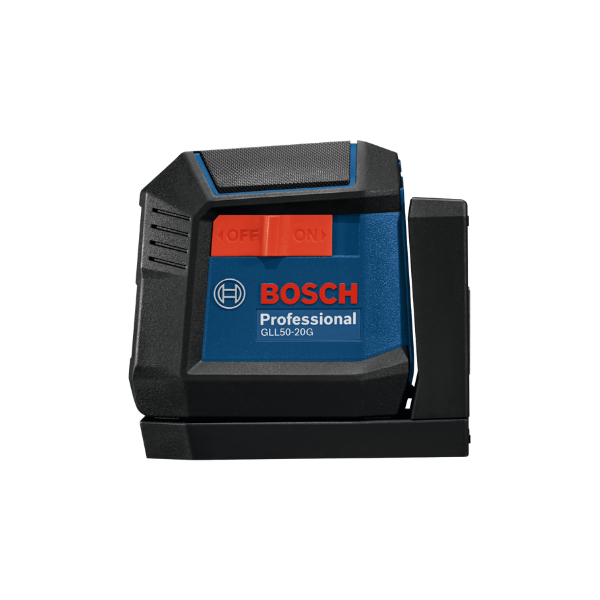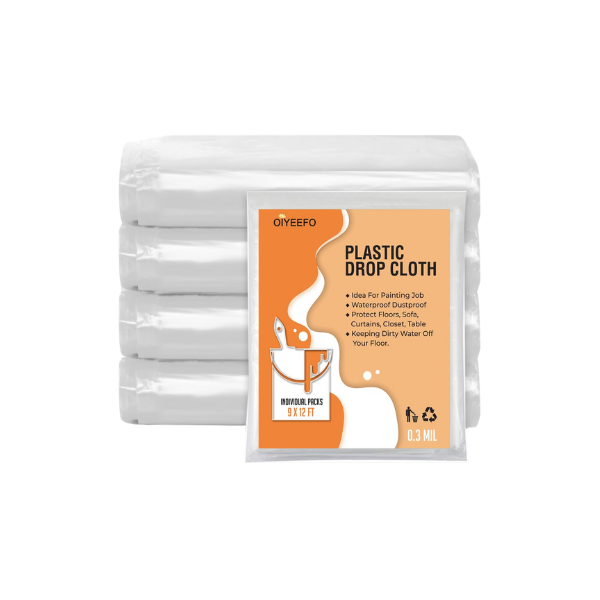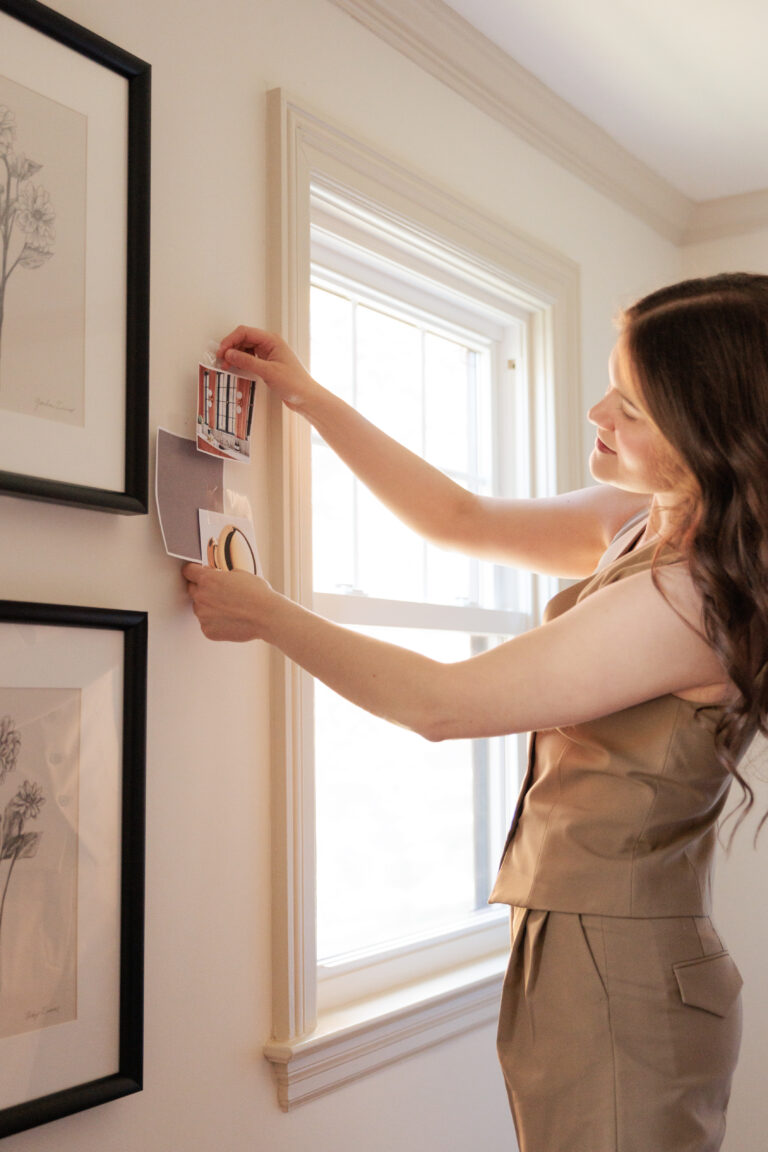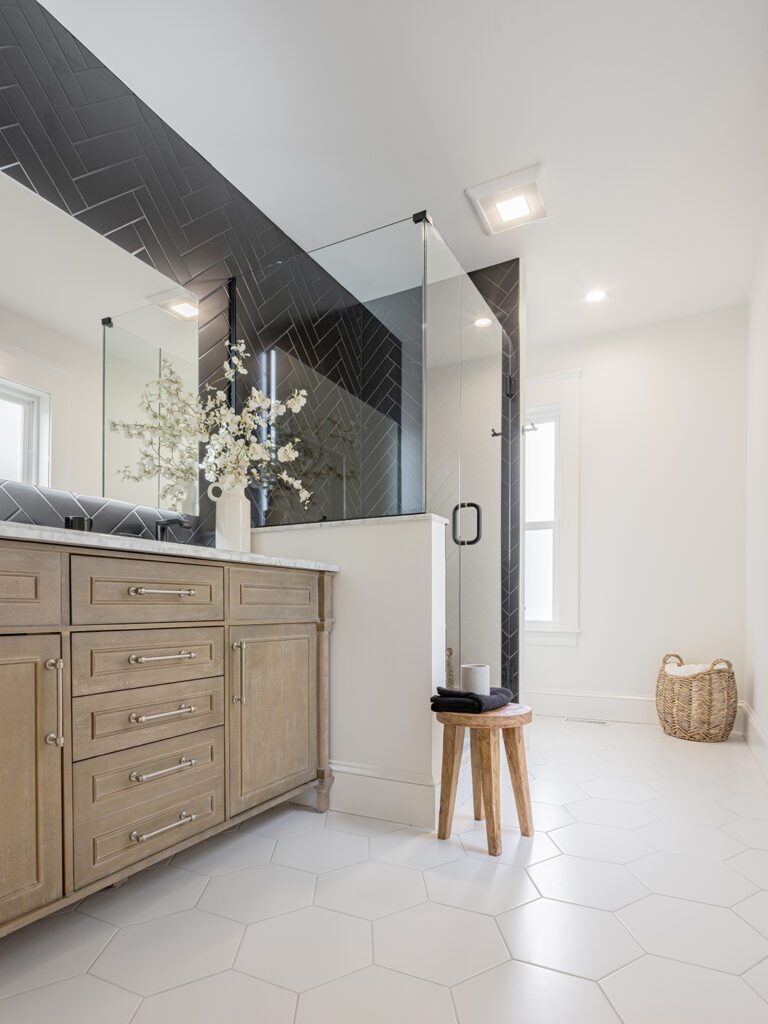Beyond the Roll: 7 Simple Steps to Flawless Wallpaper Installation
Before you commit to that gorgeous wallpaper pattern you saved on Pinterest, let’s talk about what actually happens when wallpaper installation day arrives. From selecting the right adhesive to measuring your space correctly, I’m sharing all the secrets to a smooth wallpaper installation process. Let’s jump in!
I’ve transformed powder rooms, laundry rooms, dining rooms (you name it) with wallpaper in my years renovating houses, and I can attest that nothing changes a room’s design faster.
That boring bathroom? Suddenly, a conversation starter.
That uninspiring home office where you spend 8+ hours staring at blank walls? Now, a creative retreat that supports your work.
Your lackluster bedroom? A sacred sanctuary that actually feels like you.
I think you get the picture.
Wallpaper installation might seem straightforward in those time-lapse reels on Instagram, but it actually requires some prep on the front end. But don’t worry–the extra effort is so worth it in the end.
Let me save you some prep time with this comprehensive wallpaper installation guide based on years of experience—both the victories and the epic fails. From pre-installation prep to the finishing touches, I’m sharing all the details you won’t find on the back of the wallpaper roll.
Let’s get started.
1. Pick the Right Wallpaper for You
Before you *add to cart*, consider which wallpaper type is the best option for your space, budget, skill level, and style. These are the 4 main categories to consider:
Traditional Wallpaper: For the Classic DIY-er
- Requires wallpaper paste for installation
- Wide range of patterns and colors available
- Best for permanent installations
Pre-pasted Wallpaper: For the Adventurous DIY-er
- Includes adhesive that activates with water
- Generally easier to install than traditional
Peel-and-Stick Wallpaper: For the Renter & Design Commitment-Phobe
- Temporarily adheres without wallpaper adhesive
- Easiest to install and remove (as the name suggests)
Grasscloth/Natural Fiber Wallpaper: For the Bold DIY-er
- Textured wallpaper made from natural materials
- Often the most expensive option
- Provides wonderful depth and tactile interest
- Best for creating high-impact, sophisticated spaces
For beginners, I recommend trying peel-and-stick or pre-pasted wallpaper. These options are more forgiving during the installation process, allowing you to reposition as needed without a major hiccup or code red.🚨
Also, consider the who and how of your room. What I mean by that is: Who uses the room, and how do they use it?
Is it a high-moisture area like a bathroom? If that’s the case, opt for a vinyl or vinyl-coated paper that can withstand humidity. Are you designing a kids’ bedroom? Then look for washable options that can handle the inevitable crayon creation.
2. Get the Measurements Right
Nothing is worse than running out of wallpaper a few feet before the finish line, especially if you’re working with a custom-printed or limited-edition pattern. Please, don’t ask me how I know...
Learn from my mistakes! Here’s the exact measurement formula I use to get the right wallpaper amount every time:
- Measure the height of your walls from floor to ceiling and round up to the nearest whole number. For example, if you’re ceiling height is 95.5″, use 96″ or 8′ as your total height.
- Measure the width of each wall you plan to cover and add the width measurements to get the total horizontal coverage, then round up to the nearest whole number.
- Multiply the wall height by the horizontal coverage to get the total area.
- Calculate the total square footage of the areas that will not be covered by wallpaper (doors, windows, fireplaces, case openings, etc.) and subtract that figure from the total area to get the net total area. Stay with me. We’re almost done!
- If applicable, verify the pattern repeat on the wallpaper specs.
- Divide this net total area by the usable wallpaper per roll (varies depending on pattern repeat)
- Round up to the nearest whole number.
- Finally, add at least 10% more to your total for pattern matching, mistakes, and future repairs. You might think you don’t need extra, but trust me, you do.
Planning Tip
Be sure to check the “pattern repeat” measurement on your wallpaper specs. Larger repeats mean you’ll need to account for more waste during installation to ensure patterns line up properly.
Most wallpaper is sold by the roll, with standard rolls covering about 35 square feet. However, roll size may vary, so double-check the specs before hitting the *buy now* button.
3. Build a Wallpaper Installation Toolkit
When it comes to wallpaper installation, you’re only as good as your tools. Here’s everything you need to make you wallpaper install a seamless experience.
Wallpaper Installation Toolkit
It’s a lot of tools, I know. But don’t worry, you can get all-in-one installation kits for under $23 on Amazon. I used this beginner-friendly kit when I was just starting out, and it made wallpaper installation a breeze.
Well, not exactly a breeze, but easier than I expected. Practice is the only thing that makes perfect!
Toolkit
4. Prep Your Walls for Success
The devil’s in the details, especially when it comes to wall treatments. It all starts with the walls. Clean your walls with warm water, mild soap, and a sponge to remove dust, grease, and any other residue.
Patch any holes or imperfections with spackling compound. Once that dries up, sand it down with 120-grit sandpaper, then switch to 220-grit for a smooth finish.
For walls with glossy paint, lightly sand the surface so the wallpaper adhesive can latch onto it. If you just painted your walls, give them at least 4 weeks to cure before starting your wallpaper install.
If you want to take your wall prep a step further, apply a wallpaper primer. I usually skip this step if I’m working with a smooth, sealed surface, but otherwise it’s a good product to have on hand.
5. Strategize Your Wallpaper Layout
Before you make your first cut, you need to create a layout strategy.
Planning your cuts is essential, especially when working with patterned wallpaper or rooms with prominent features like fireplaces or built-ins. These are the best tips I’ve picked up after years of trial and error:
Find the Starting Point
- Locate the least noticeable corner and start there.
- For focal walls, measure to find the exact center and work outward symmetrically.
- In rooms with multiple doorways or windows, start on the wall with the fewest obstructions.
Mark the Plumb Line
- Measure the width of your wallpaper from your starting point.
- Mark this measurement at both the ceiling and floor.
- Use a laser level to draw a vertical line connecting the 2 points.
- This line—not the corner of your room—will guide your first strip placement.
Plan the Pattern Placement
- Lay out your first 3-4 strips on the floor to understand the pattern repeat. Having a visual reference will save you so many headaches during the install process.
- For symmetrical patterns, center the most prominent element on focal points (like above fireplace mantle).
- Mark ceiling and baseboard locations where key pattern elements should align.
- Add 4″ to each measurement (2″ for ceiling trim, 2″ for baseboard trim). Once installed, trim the excess with a utility knife.
Take your time with these steps. It’s better to double and triple-check your work than make the wrong cut.
RELATED POST: The Easiest Red Brick Fireplace Makeover Ideas for New DIY-ers
6. Study the Application Technique
Patience is a virtue when it comes to installing wallpaper. Here’s a primer on each application technique so you know what to expect when it’s time to install:
Pre-Pasted Wallpaper
- Cut strips to length, adding 2 inches on the top and bottom for trimming
- Fill your water tray or spray bottle
- Wet the strip, then book the paper by loosely folding it adhesive side to adhesive side
- Allow it to rest for the manufacturer-recommended time (usually 2-5 minutes)
- Starting at the top, position your wallpaper along your plumb line
- Smooth outward from the center using your smoothing tool
- Trim excess at the ceiling and baseboards using your utility knife
Peel-and-Stick Wallpaper:
- Cut strips to length, adding 2 inches on the top and bottom for trimming
- Peel back the first foot of backing
- Starting at the top, position your wallpaper along your plumb line
- Smooth outward from the center using your smoothing tool
- Continue peeling backing and smoothing in 1-foot increments
- Work slowly and smooth out air bubbles with your smoothing tool as you go
- Trim excess at top and bottom with your utility knife
Traditional Wallpaper:
- Cut strips to length, adding 2 inches on the top and bottom for trimming
- Apply paste evenly to the back of the paper (or directly to the wall for some papers)
- Book the paper by loosely folding it adhesive side to adhesive side
- Allow it to rest for the manufacturer-recommended time (usually 2-5 minutes)
- Unfold the top portion and position along your plumb line
- Smooth from center outward, working down as you unfold
- Clean excess paste immediately with a damp sponge
For all wallpaper types, use a seam roller to gently press seams flat after application. This creates a stronger adhesion at the edges without damaging the wallpaper.
7. Settle Down
Once installation is complete, give yourself a round of applause and a much-needed break. And whatever you do, please don’t touch the walls. No artwork, no furniture, and no command hooks.
Curing is the Cure
If you notice tiny bubbles, you can fix them with your smoothing tool or carefully puncture them with a pin and smooth them down. For seams that start to lift, apply a small amount of seam adhesive with a cotton swab.
Common Wallpaper Installation Questions
Can I install wallpaper in my bathroom?
You sure can. Just make sure to select a wallpaper that’s suitable for high-moisture areas. Vinyl wallpaper is your best option.
How long does wallpaper installation take?
If you’re a beginner, budget about 4-8 hours for installation for a standard 10’x12′ room. Complex wallpaper patterns or challenging room configurations will definitely add time.
Should I hire a professional installer?
You might consider hiring a pro if:
- You’re using an expensive or delicate wallpaper
- Your walls have significant imperfections
- You’re installing in tricky spaces with many obstacles
- You’re using grasscloth or other specialty papers
If you choose to go this route, expect to pay anywhere from $1-$7 per square foot, depending on your location and the complexity of the job.
RELATED POST: 6 Essential Steps to Hire the Best Home Improvement Contractor
Wallpaper installation is a skill and an art. Your first attempt may not be perfect, and that’s completely okay.
Remember, you’re creating a space that feels like you—a home that supports your wellbeing and brings you joy every time you enter the room. Wallpaper isn’t just decoration; it’s an everyday backdrop to your life’s most meaningful moments.
This post is all about wallpaper installation techniques for creating spaces that truly feel like home.


